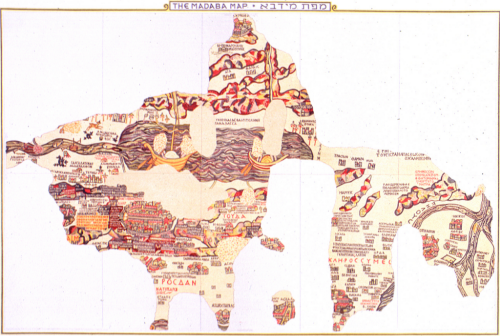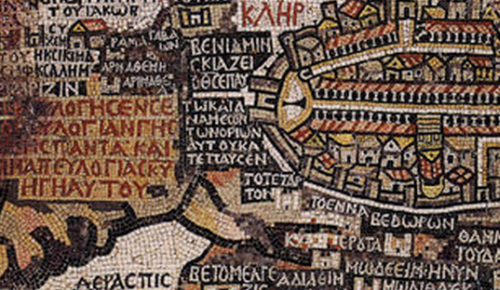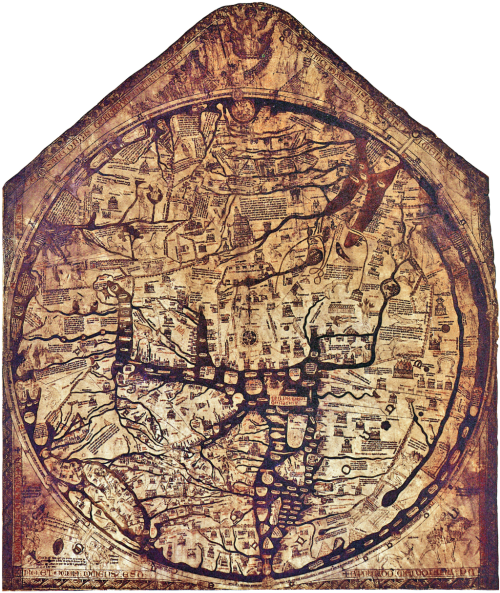Art comes in many forms and many artists use maps as a vehicle for expression. The most impressive surviving example of Byzantine map-making is also the worlds oldest floor map. That is, a map on a floor made of mosaic tiles. It lies on the floor of St. George’s Church at Madaba in Jordan. Not all of the map survives as the image shows but the remaining segments clearly show the Holy Land with north upwards and Jerusalem in the centre. Topography and place names are present. Scale changes across the map which is an early example of exaggeration (as a process of generalization) to show areas of more importance as relatively larger. They required more space for the greater levels of detail.
The map depicts scenes from the Bible as well as everyday life but the main intent of the map was to encourage religious pilgrimage. The detail and the intricacy of the map shows craftmanship of the highest order, both in designing such a work made entirely of mosaic tiles but also in its construction.
The map was created with the laying and setting of tesserae, small square shaped tiles of marble, limestone and coloured glass. The original map would have been sketched out then craftsmen would have laid the tiles. This is almost paint by numbers but the combination of the original designer and the craftsmen able to execute delivery of the map shows how maps are made through collaboration of people with very specific skills.
A beautiful and artistic mosaic tile floor…which happens to be a beautiful map too.





